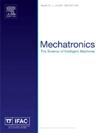Efficient avoidance of ellipsoidal obstacles with model predictive control for mobile robots and vehicles
IF 3.1
3区 计算机科学
Q2 AUTOMATION & CONTROL SYSTEMS
引用次数: 0
Abstract
In real-world applications of mobile robots, collision avoidance is of critical importance. Typically, global motion planning in constrained environments is addressed through high-level control schemes. However, additionally integrating local collision avoidance into robot motion control offers significant advantages. For instance, it reduces the reliance on heuristics, conservatism, and complexity from additional hyperparameters that can arise from a two-stage approach separating local collision avoidance and control. Moreover, using model predictive control (MPC), a robot’s full potential can be harnessed by considering jointly local collision avoidance, the robot’s dynamics including dynamic constraints (like nonholonomic constraints), and actuation constraints. In this context, the present paper focuses on local obstacle avoidance for wheeled mobile robots, where both the robot’s and obstacles’ occupied volumes are modeled as ellipsoids of arbitrary orientation. To this end, a computationally efficient overlap test, which works for arbitrary ellipsoids, is conducted and novelly integrated into the MPC framework. We propose a particularly efficient implementation tailored to robots moving in the plane. The functionality of the proposed obstacle-avoiding MPC is demonstrated for two exemplary types of kinematics by means of simulations. A hardware experiment using a real-world wheeled mobile robot shows transferability to reality and real-time applicability. Moreover, numerical experiments show that, due to the approach’s general nature, it can be directly applied to dynamic situations like moving obstacles. The general computational approach to ellipsoidal obstacle avoidance can also be applied to other robotic systems and vehicles as well as three-dimensional scenarios.
基于模型预测控制的移动机器人和车辆椭球体障碍物有效避障
在移动机器人的实际应用中,避碰是至关重要的。通常,约束环境中的全局运动规划是通过高级控制方案解决的。然而,将局部避碰集成到机器人运动控制中具有显著的优势。例如,它减少了对启发式、保守性和额外超参数的依赖,这些超参数可能来自分离局部冲突避免和控制的两阶段方法。此外,利用模型预测控制(MPC),通过联合考虑局部避碰、机器人动力学包括动力学约束(如非完整约束)和驱动约束,可以充分利用机器人的潜力。在这种情况下,本文主要研究轮式移动机器人的局部避障问题,其中机器人和障碍物的占用体积都被建模为任意方向的椭球体。为此,进行了一种计算效率高的、适用于任意椭球体的重叠测试,并将其新颖地集成到MPC框架中。我们提出了一种特别有效的实现,专门针对在平面上移动的机器人。通过仿真验证了所提出的避障MPC的两种典型运动学类型的功能。利用实际轮式移动机器人进行硬件实验,验证了其可移植性和实时性。此外,数值实验表明,由于该方法的通用性,可以直接应用于移动障碍物等动态情况。椭球避障的一般计算方法也可以应用于其他机器人系统和车辆以及三维场景。
本文章由计算机程序翻译,如有差异,请以英文原文为准。
求助全文
约1分钟内获得全文
求助全文
来源期刊

Mechatronics
工程技术-工程:电子与电气
CiteScore
5.90
自引率
9.10%
发文量
0
审稿时长
109 days
期刊介绍:
Mechatronics is the synergistic combination of precision mechanical engineering, electronic control and systems thinking in the design of products and manufacturing processes. It relates to the design of systems, devices and products aimed at achieving an optimal balance between basic mechanical structure and its overall control. The purpose of this journal is to provide rapid publication of topical papers featuring practical developments in mechatronics. It will cover a wide range of application areas including consumer product design, instrumentation, manufacturing methods, computer integration and process and device control, and will attract a readership from across the industrial and academic research spectrum. Particular importance will be attached to aspects of innovation in mechatronics design philosophy which illustrate the benefits obtainable by an a priori integration of functionality with embedded microprocessor control. A major item will be the design of machines, devices and systems possessing a degree of computer based intelligence. The journal seeks to publish research progress in this field with an emphasis on the applied rather than the theoretical. It will also serve the dual role of bringing greater recognition to this important area of engineering.
 求助内容:
求助内容: 应助结果提醒方式:
应助结果提醒方式:


